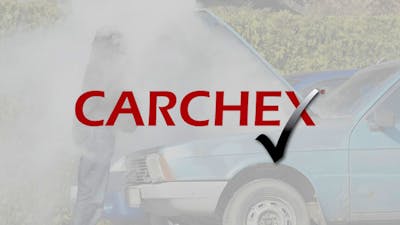Recalls with no fix; What Should You Do?
Recalls are a part of normal vehicle ownership. You get a letter via snail mail telling you that your fitzer valve may have been improperly tightened at the factory. You schedule an appointment to get a new one. Not a big deal.
But what if your vehicle has a known defect that the manufacturer can’t fix? Or can’t even determine the root cause of? This is a real situation, and it happens more often than you might think. Let’s look at what you can do if you own a vehicle with a problem your dealer and the manufacturer can’t or won't fix.
Popular Warranty Providers
Recall Overview
The National Highway Traffic Safety Administration, NHTSA, is tasked with handling millions of recalled vehicles each year in America. How many millions? Over 35 million vehicles and related equipment were recalled in 2021, and it was not an unusual year. With over 1,000 different recall campaigns underway, NHTSA adds about three new recalls per week on average. Recalls are generally safety related, and vehicle owners don’t pay for the repairs. However, many recalls begin as technical service bulletins, which are what manufacturers call the instructions to fix certain known problems. These you often end up paying for.
An Example of a Problem Without a Solution
In 2021, Mazda issued a technical service bulletin related to its (outstanding) 2.5-liter turbocharged gas engine. The engine is used in every current Mazda model except Mazda’s Miata. In fact, it is the engine used in many of the top trims of the company’s most popular models. So, suffice it to say, this is not a small challenge for Mazda.
The engines have a tendency to consume oil. How much oil? Enough to drain the full reservoir between oil changes. So you can see why owners of a new top-trim Mazda may be concerned about this issue. The real problem isn’t that the engines are drinking up the oil. The issue is that Mazda does not know why. So Mazda is offering free oil changes and free oil top-offs for any impacted owner.
In its TSB, Mazda writes, “This is only a temporary repair and as soon as Mazda identifies the root cause, a complete repair procedure will be announced. Mazda will top off or replace the engine oil at no charge until the complete repair is provided.” It’s been about a year and no root cause or final remedy had been announced at the time this story was published.
Try Not to Buy a Car That Has a Problem With No Remedy
Would we buy a new car knowing this problem existed? Heck no! So step one is don’t buy a car with a known problem.
How do you know if a model you are considering buying has a problem? There are many ways. Join a social media club or two for that specific model. The online chats will help you find out if there is anything happening you need to know about. You can also search in your browser “Problems with…” and insert your make and model. CarComplaints.com and Consumer Reports also do a great job of tracking issues that make news. Both allow you to search for a given make model and year to see if there are commonly-reported issues.
What You Can Do If Your Car Has a Recall or TSB With No Remedy
If you already own a car with an issue, you don’t have that option anymore. Even worse, you may be making payments on a car that has a problem, and trading it in may be impossible for you. You’re stuck with a car that can’t be fixed.
Many recalls are for low-occurrence issues. The low-occurrence issue may have a high consequence, like a fire, or it may not be that big of a deal. For example, more than one car has been recalled because its center console latch was imperfect. If your car has a problem that the manufacturer is aware of but not able to fix immediately, take a few deep breaths. It usually turns out fine.
If You Have a TSB
Technical Service Bulletins (TSBs) are not a reason to panic. In fact, they can be the solution to a vexing problem. Your author has brought TSBs to the attention of dealers and independent shops, and the document led to a quick fix that otherwise seemed impossible to nail down.
If the TSB describes an issue you are struggling with, we suggest you visit the dealer for two reasons. First, they may well repair the vehicle, and it may cost you nothing. If you do pay, keep your receipt and wait for reimbursement if a recall is issued later. If they cannot resolve the issue, your receipt is a paper trail for a later recall repair.
If You Get a Recall
If you are notified of a recall, whether there is a known fix or not, plan to visit your dealer. However, call ahead and speak to the service department. Ask them if there is a known fix, and ask if the parts are available. If not, waiting may be the better plan unless the issue is likely to cause an accident.
Follow The Manufacturer’s Plan of Action
For our example above of the Mazda engines that consume oil, watching the oil level was the basic plan. This gives Mazda time to find a fix. Do what is asked and stay informed. A well-publicized recall involving the Chevy Bolt had multiple plans of action. First it was “Park outside.” Then, “Park away from structures.” This was followed by a software update that reduced the vehicle’s range somewhat so the batteries would not be stressed and catch fire. Bolt owners almost universally wanted to keep their cars, and they muddled through the many updates to the special instructions. Ultimately, GM replaced all of the batteries for every Bolt ever built. It took time, but most Bolt owners who waited it out are just as enthusiastic about their cars today as they were when they drove off the lot.
When recalls drag on, manufacturers will usually keep their owners informed via mail. It’s quaint, but that’s what regulators usually insist on. Social media is often helpful here. As soon as any member gets an update, they post the letter for all to see. We suggest following the issue both ways. If the steps involve any checks or dealer visits, keep all of your documents. Don’t assume the dealer will do so.
Dealers May Be The Last To Know
Oddly, dealers never seem to know much about recalls and TSBs unless you ask them to discuss one you already know about. We wish it were otherwise, but our experience is that they either don’t follow news of their own brand or pretend not to.
When we brought a Subaru Forester in for repairs after a recurring engine code, the dealer at first didn’t mention an open TSB for the issue. However, we noted that the final paperwork included the TSB’s number. That repair was expensive, and the manufacturer covered it. Our take was that the dealer wanted to pretend the issue was one they solved, not one that the manufacturer had already listed among known issues with known fixes.
Independent Mechanics Are Hit Or Miss
We solved a recurring Honda Fit misfire code ourselves by telling an experienced mechanic there was a TSB for the problem. That got us thinking. Then we found a TSB for an o-ring issue in an Accord and helped another expert mechanic identify the repair steps. Both were technically-savvy mechanics with computers in their shops, but both failed to simply “Google the answer.” If you use an independent mechanic, be sure to stay actively involved in the repair process.
If you own a car involved in a recall with no known remedy, don’t panic. The manufacturer will almost always identify the root cause and come up with a plan of action given time. Be involved, keep your paperwork, follow all of the instructions provided, and more than likely, the manufacturer will figure out the solution.













